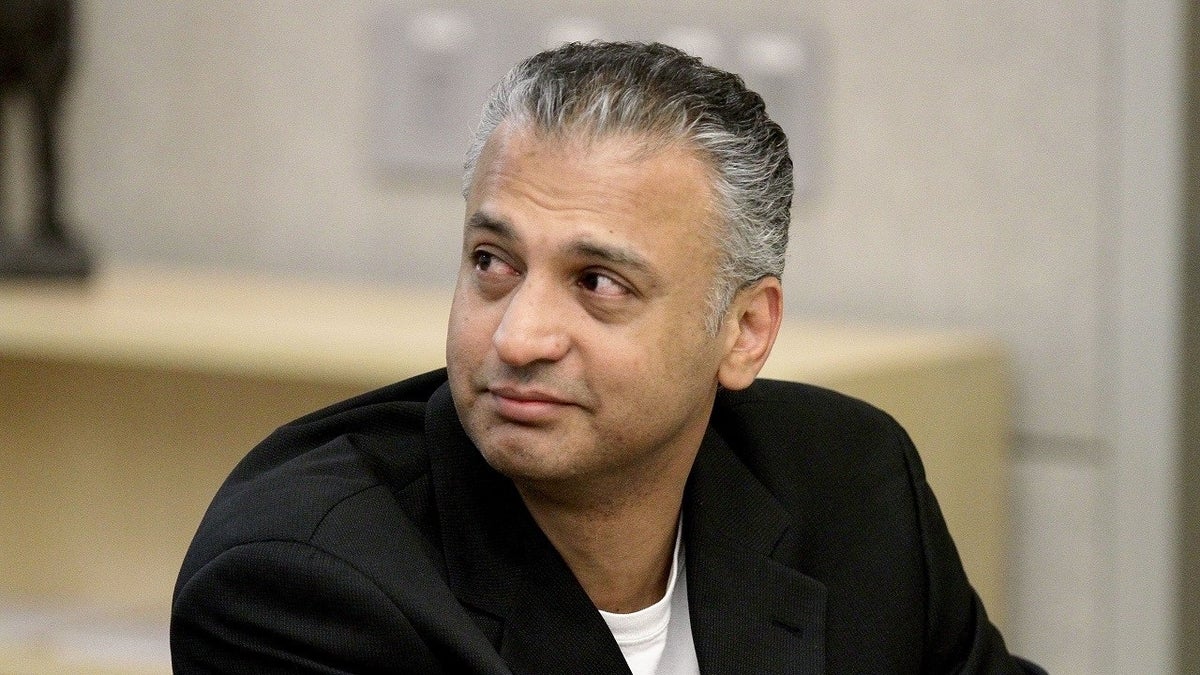Shelley Malil: From "40-Year-Old Virgin" To Convicted Criminal - News & Updates
Can a man, once convicted of attempted murder and assault, truly be rehabilitated? Shelley Malil's story, a tale of Hollywood dreams and a devastating act of violence, forces us to confront this difficult question.
The name Shelley Malil, once associated with comedic roles in films like "The 40-Year-Old Virgin," is now inextricably linked to a harrowing chapter of real-life drama. In a case that captivated the public, Malil, a character actor with a promising career, was convicted of attempted murder and assault with a deadly weapon in 2010. The events that led to his conviction shattered the illusion of his Hollywood persona and exposed a darker reality that left a lasting impact on those involved.
| Full Name: | Shelley Mathew Malil |
| Date of Birth: | December 23, 1964 |
| Place of Birth: | Kerala, India |
| Nationality: | Indian, American (Naturalized) |
| Known For: | Actor, best known for his role as Haziz in "The 40-Year-Old Virgin." |
| Notable Works: | "The 40-Year-Old Virgin" (2005), "My Favorite Martian" |
| Conviction: | Attempted Murder, Assault with a Deadly Weapon |
| Sentence: | Life in prison with the possibility of parole after 12 years |
| Parole: | Granted after serving 8 years |
| Parole Date: | Tuesday |
| Victim: | His girlfriend |
| Legal Representation: | Information Not Publicly Available |
| Current Status: | Released from prison |
| Reference: | IMDb - Shelley Malil |
Malil's journey began in Kerala, India, where he was born and raised. He later emigrated to the United States in 1974, seeking opportunities and a new life. His upbringing in the Indian state of Kerala, among the Malayalee people, instilled in him a sense of humor and a comedic perspective on life, traits that would later serve him well in his acting career. Malil's career saw him appear in several television shows and films, including the hit comedy "The 40-Year-Old Virgin" where he played the role of Haziz. He also had a role in "My Favorite Martian." These roles brought him recognition and established him as a recognizable face in Hollywood.
However, Malil's professional success was tragically overshadowed by a horrific act of violence. In August 2008, in San Marcos, California, the idyllic setting of a romantic relationship turned into a scene of terror. Prosecutors said that Malil showed up at his girlfriend's home and stabbed her multiple times. The attack was brutal and left the victim with severe injuries. The details of the attack, as presented in court, painted a picture of rage and desperation, starkly contrasting with the lighthearted characters Malil often portrayed on screen.
The legal proceedings that followed brought the details of the case into the public eye. In 2010, after a trial in San Diego County, a jury found Malil guilty of attempted murder and assault with a deadly weapon. The conviction was a devastating blow, both personally and professionally. The verdict brought an abrupt end to Malil's acting career, casting a dark shadow over his past achievements and future prospects. He was sentenced to life in prison, with the possibility of parole after 12 years. The sentence reflected the severity of the crime and the potential threat Malil was deemed to pose.
After serving eight years of his sentence, Malil was granted parole. The decision, made by a California parole board on Tuesday, was based on an assessment of Malil's risk to the public. The board determined that he was a low risk for committing violent acts in the future. This decision, however, was met with mixed reactions. While some might view it as an opportunity for rehabilitation, others, including his former girlfriend, Kendra Beebe, expressed concerns about their safety. Beebe has stated that she doesn't feel safe after Malil's release.
The parole board's decision was not without controversy. The debate surrounding Malil's release highlighted the complexities of the criminal justice system and the often-conflicting goals of punishment, rehabilitation, and public safety. While the parole board focused on assessing the risk of future violence, the victim and others close to the case have to live with the trauma of the past. The conflicting emotions brought out by this case underscore the lasting impact of Malil's actions and the challenges associated with reintegrating individuals convicted of violent crimes back into society.
The parole hearing itself provided a platform for Malil to testify in his own defense. He has always maintained his innocence. During this time, the parole board considered factors such as Malil's behavior in prison, his remorse, and his potential for rehabilitation. The parole board's final decision was based on an evaluation of these factors.
The case also drew attention to the psychological evaluations performed on Malil. Before the parole decision, psychological evaluations determined that Malil represented a low risk of committing violence in the future. The decision to grant parole, informed by these evaluations, reflects the belief that, after serving time and undergoing evaluation, Malil no longer posed a significant threat to public safety. This decision, however, is a matter of ongoing debate, particularly in the eyes of the victim and those close to her.
The release of Shelley Malil highlights the need for a thorough understanding of the complexities of crime, punishment, and rehabilitation. It is a reminder that the consequences of one's actions can reverberate through time, affecting both the perpetrator and the victim, as well as the wider community. The case also underscores the challenges faced by those who re-enter society after serving time for serious crimes, along with the importance of ensuring public safety. The case, therefore, provides a case study for a discussion on forgiveness, justice, and public safety.
The lasting impact of the events surrounding Shelley Malil's case remains a focus for many. The circumstances of the crime, the legal proceedings, and the recent decision to grant parole have resulted in a complex narrative that includes themes of violence, redemption, and the pursuit of justice. As Malil navigates his life post-incarceration, the question of his future remains open. His story serves as a stark reminder of the fragility of life, the devastating consequences of violence, and the complexities of the criminal justice system.
The aftermath of the event has led to extensive media coverage, including discussions on social media platforms like Twitter and TikTok, under hashtags such as #crime, #truecrime, and #truecrimetiktok. This extensive media engagement illustrates the ongoing public interest in the case and its implications, generating discussions around the intersection of crime, celebrity, and justice.
The case also underscores the challenges faced by those who are convicted of violent crimes and the challenges of reintegrating those individuals back into society. It highlights the importance of comprehensive rehabilitation programs and mental health services. The long-term implications of this case include the need for a reassessment of prison sentencing, parole guidelines, and the resources available to both victims and former offenders. It also brings forward questions of forgiveness, justice, and the responsibility of society to ensure the safety and well-being of its members. The narrative of Shelley Malil, from actor to convict and now a free man, compels us to consider the possibilities of redemption, the reality of punishment, and the enduring significance of the events.

:max_bytes(150000):strip_icc():focal(999x0:1001x2)/shelley-malil-2-2000-bbe488fa51f74ff7b2253bb94f6222fe.jpg)
